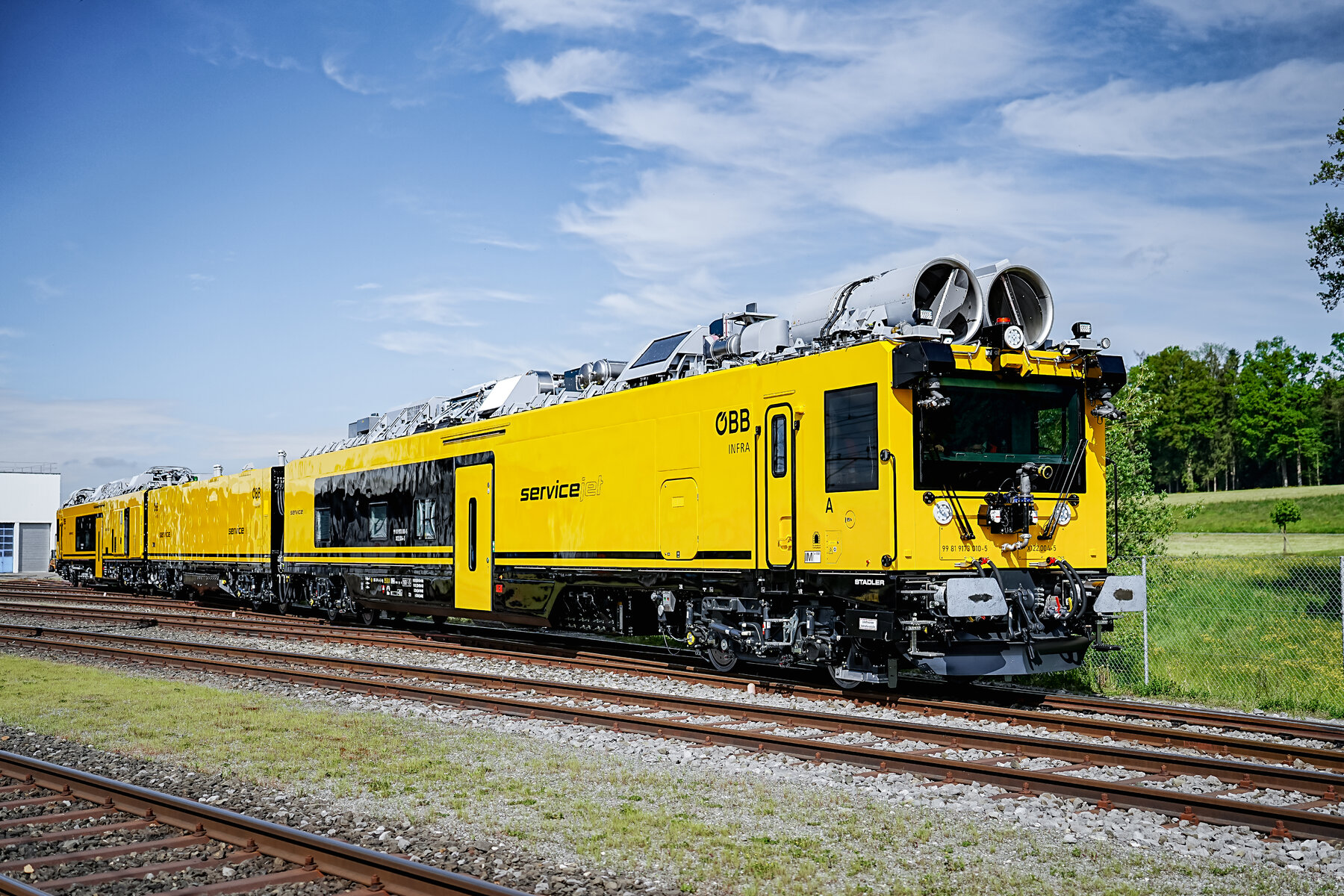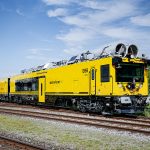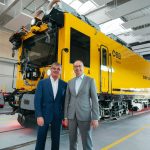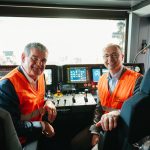 ÖBB and Stadler have presented the new trimodal rescue train at the at the ÖBB training campus in St. Pölten on 17 May 2024. Under a EUR 230 million contract, Stadler will deliver 18 multifunctional, low-emission firefighting and rescue trains to ÖBB-Infrastruktur AG.
ÖBB and Stadler have presented the new trimodal rescue train at the at the ÖBB training campus in St. Pölten on 17 May 2024. Under a EUR 230 million contract, Stadler will deliver 18 multifunctional, low-emission firefighting and rescue trains to ÖBB-Infrastruktur AG.
Under the name “Servicejet”, these will then be stationed at Austrian tunnel portals and deployed on site to assist firefighters. The vehicles were developed and produced at the Swiss sites in Bussnang and St. Margrethen.
The 68 metre long train is able to run at 160 km/h in both directions.
Its electric hybrid drive system can run on several energy sources such as the overhead line, powerful traction batteries and diesel generators.
This enables the trimodal rescue train to realise a completely new firefighting and rescue concept. It can fight its way through a smoky tunnel to the source of the fire, rescue people from damaged trains, tow damaged trains, fight fires and get itself and everything it is carrying out of the danger zone to safety.
Our new Servicejets enable us to provide assistance even faster than before. They provide more power in a larger operational area. The new concept also enables a reduction from 21 to 18 vehicles,” Johann Pluy, Member of the Board of Management of ÖBB-Infrastruktur said.
The new rescue train manufactured by Stadler combines versatility with operational tactics. It has to be equipped for the worst-case scenario, which would be a firefighting and rescue operation in a railway tunnel. As well as being able to recover passengers from other trains during an evacuation, it is also suitable for carrying out maintenance work.
In an emergency, there is enough room for over 300 people in the three cars, which have uninterrupted access along the entire train. 18 seats are fitted with SCBA brackets for firefighters. An HVAC system with special filters protects people on the train from smoke gases. What is more, the entire train is pressurised, which means that there is a slight overpressure inside to keep it free of smoke in tunnels. The front part of the train where the driver’s cab is located is protected by a water spray system on the outside.
The rescue train can also be loaded with themed roll containers. These containers transport firefighting equipment such as portable pumps, forest firefighting equipment, breathing apparatus, special protective suits, etc. The roll containers are fully loaded at ÖBB Infrastruktur support points, stowed in the trains as required and unloaded at the deployment sites using built-in lifts. This enables intervention teams to respond rapidly to a wide variety of scenarios.
The vehicles have two different extinguishing systems for firefighting. Firstly, a high-pressure system (100 bar) for generating fine spray mist, for example to cool a tunnel tube or to moisten the verges of the track as the train moves along to prevent them from catching fire; and secondly, a system at normal pressure (10 bar) for traditional firefighting. The multiple unit has 40,000 litres of water and 1,200 litres of foam concentrate on board (in the intermediate car) which can be released via two high-pressure and one normal-pressure extinguishers. These extinguishers are mounted at the head of the train and can be controlled individually from the driver’s cab. There are also two jet fans on the roof of the railcars at the front and rear, which transport the water mist emitted by the high-pressure monitors. These fans can also be used during the evacuation of people to create counter-pressure in a smoke-filled tunnel and to prevent the flow from reversing. Powerful searchlights and thermal imaging cameras have also been installed for search and rescue operations, allowing emergency services to see through the smoke.
The rescue train will be used for the first time for the opening of the Koralm Railway, which incorporates a 33-km tunnel.
Share on:






